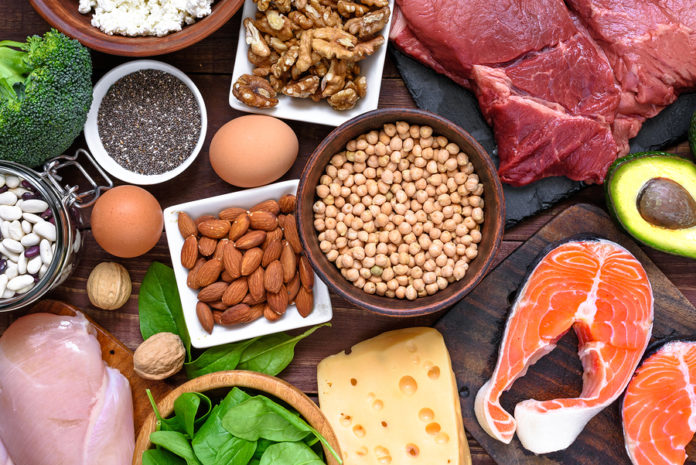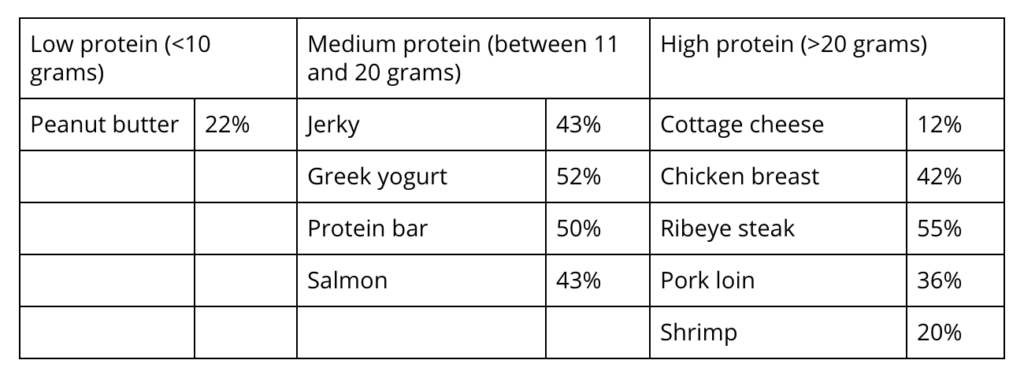
High-protein diets are all the rage, so it should come as no surprise that consumers spend a sizable portion of their grocery budget on animal and plant-based proteins. However, a survey from Nielson shows many shoppers erroneously choose which foods will give them the most protein bang for their buck. The reason? Lack of understanding.
Expectations vs. reality
People still purchase traditional sources of protein, like meat, eggs, dairy, and fish, to hit their macro goals for the day (although plant-based proteins have also crept into the top five protein sources). It’s clear consumers have a basic understanding of where to get protein, but what they don’t understand is how much protein is in the foods they’re choosing.
For example, less than a quarter of survey respondents knew that peanut butter has a relatively low (< 10 grams) protein count per serving. On the flipside, chicken, pork, and shrimp didn’t get the credit they deserve.
Here are the percentages of survey respondents, when asked how much protein was in certain food items, hit the nail on the head.

The high demand for — and staggering misunderstanding about — protein presents a valuable opportunity for the food industry.The opportunity
Protein-packed products
Although meat and eggs are still the go-tos, consumers are also wandering outside the meat counter and dairy section. And food manufacturers who are producing protein alternatives or otherwise protein-rich foods are reaping the benefits. Products classified as “good” or “excellent” sources of protein earned $22.3 billion in sales in the 52 weeks ending in June 2018, and that number is on an upward trajectory.
Education
If consumers don’t fully understand something critically important to the human diet, the industry have an opportunity to teach them. Share information about protein-rich foods, both animal and plant-based, on your social media channels, website, and other advertisements to help your customers get a firm grasp on how much protein is in certain products.
Clear labeling
Today’s consumers value clear labeling and are hungry for more nutritional information about what they’re eating. Plus, shoppers make 60% of their purchase decisions at the shelf. So during the make-it-or-break-it moment when customers pick up your product from the shelf or out of the cooler, it’ll benefit both parties to know exactly how much protein is in a product — no matter how obvious it may seem.
—
Related reading:







